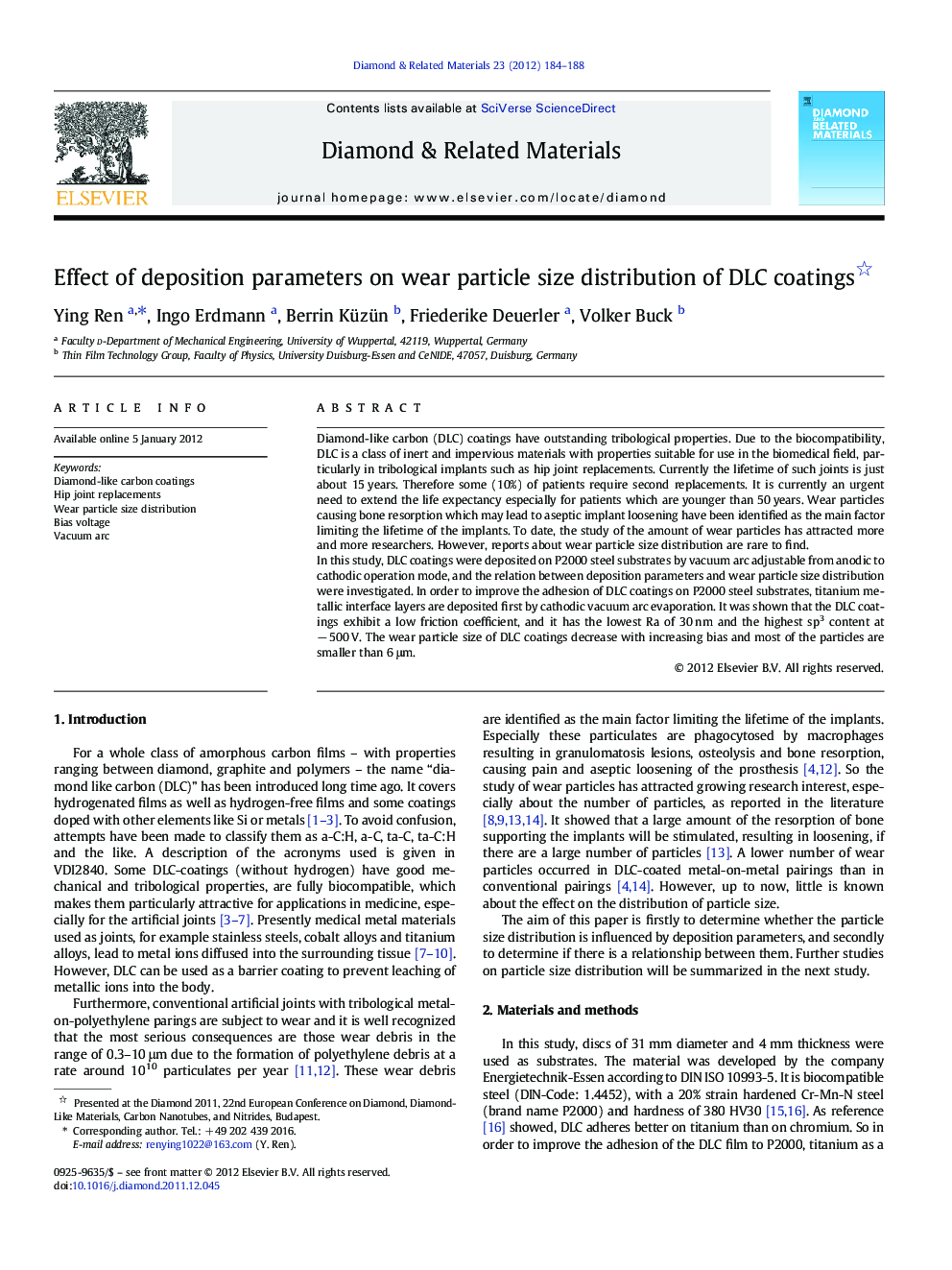| Article ID | Journal | Published Year | Pages | File Type |
|---|---|---|---|---|
| 702645 | Diamond and Related Materials | 2012 | 5 Pages |
Diamond-like carbon (DLC) coatings have outstanding tribological properties. Due to the biocompatibility, DLC is a class of inert and impervious materials with properties suitable for use in the biomedical field, particularly in tribological implants such as hip joint replacements. Currently the lifetime of such joints is just about 15 years. Therefore some (10%) of patients require second replacements. It is currently an urgent need to extend the life expectancy especially for patients which are younger than 50 years. Wear particles causing bone resorption which may lead to aseptic implant loosening have been identified as the main factor limiting the lifetime of the implants. To date, the study of the amount of wear particles has attracted more and more researchers. However, reports about wear particle size distribution are rare to find.In this study, DLC coatings were deposited on P2000 steel substrates by vacuum arc adjustable from anodic to cathodic operation mode, and the relation between deposition parameters and wear particle size distribution were investigated. In order to improve the adhesion of DLC coatings on P2000 steel substrates, titanium metallic interface layers are deposited first by cathodic vacuum arc evaporation. It was shown that the DLC coatings exhibit a low friction coefficient, and it has the lowest Ra of 30 nm and the highest sp3 content at − 500 V. The wear particle size of DLC coatings decrease with increasing bias and most of the particles are smaller than 6 μm.
► 100 N as a load used in disc-on-disc testing to generate wear particles. ► The lowest friction coefficient of 0.035 attained at the bias of − 750 V. ► All particle size distributed in a range of 0.3–10 μm. ► The wear particle size decreased with increasing bias from − 250 V to − 1000 V. ► Wear particle size modified by varying the substrate bias.
